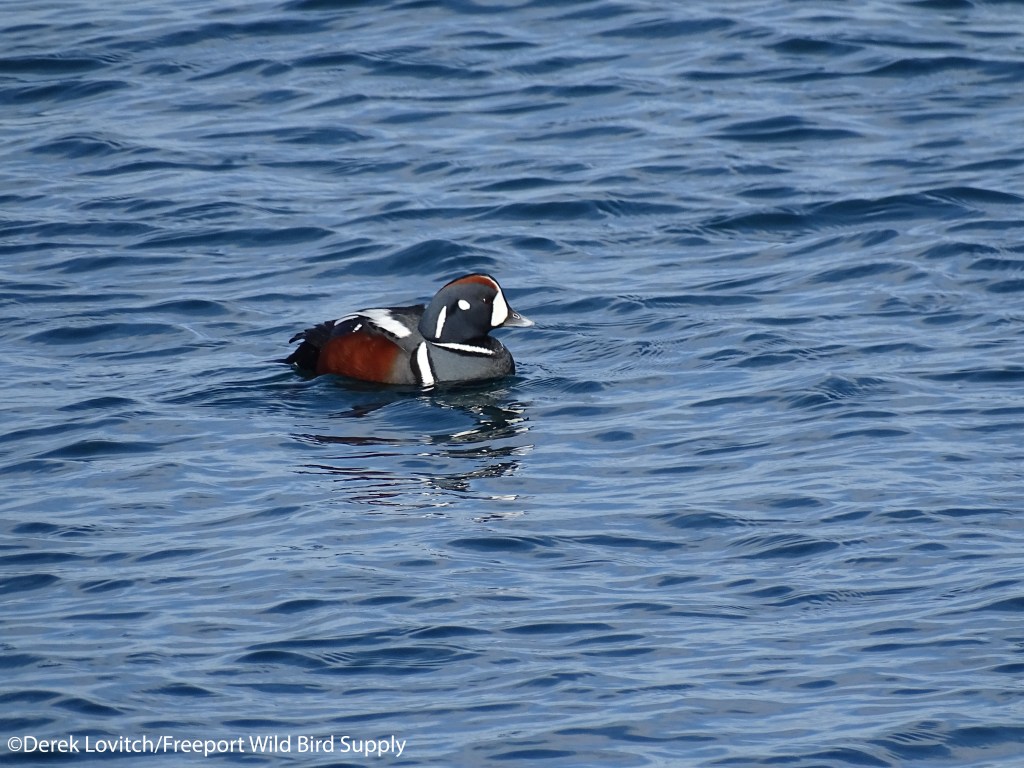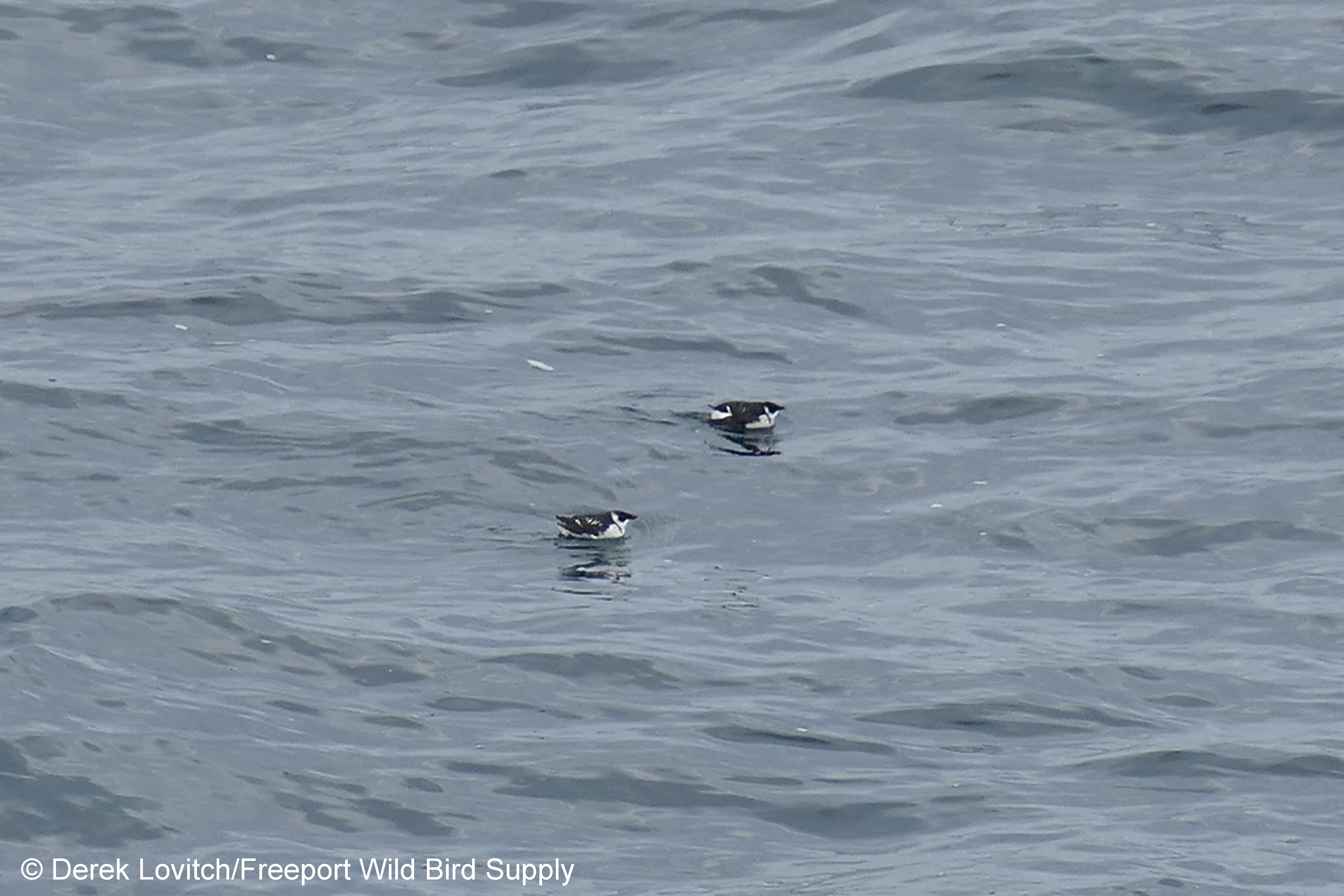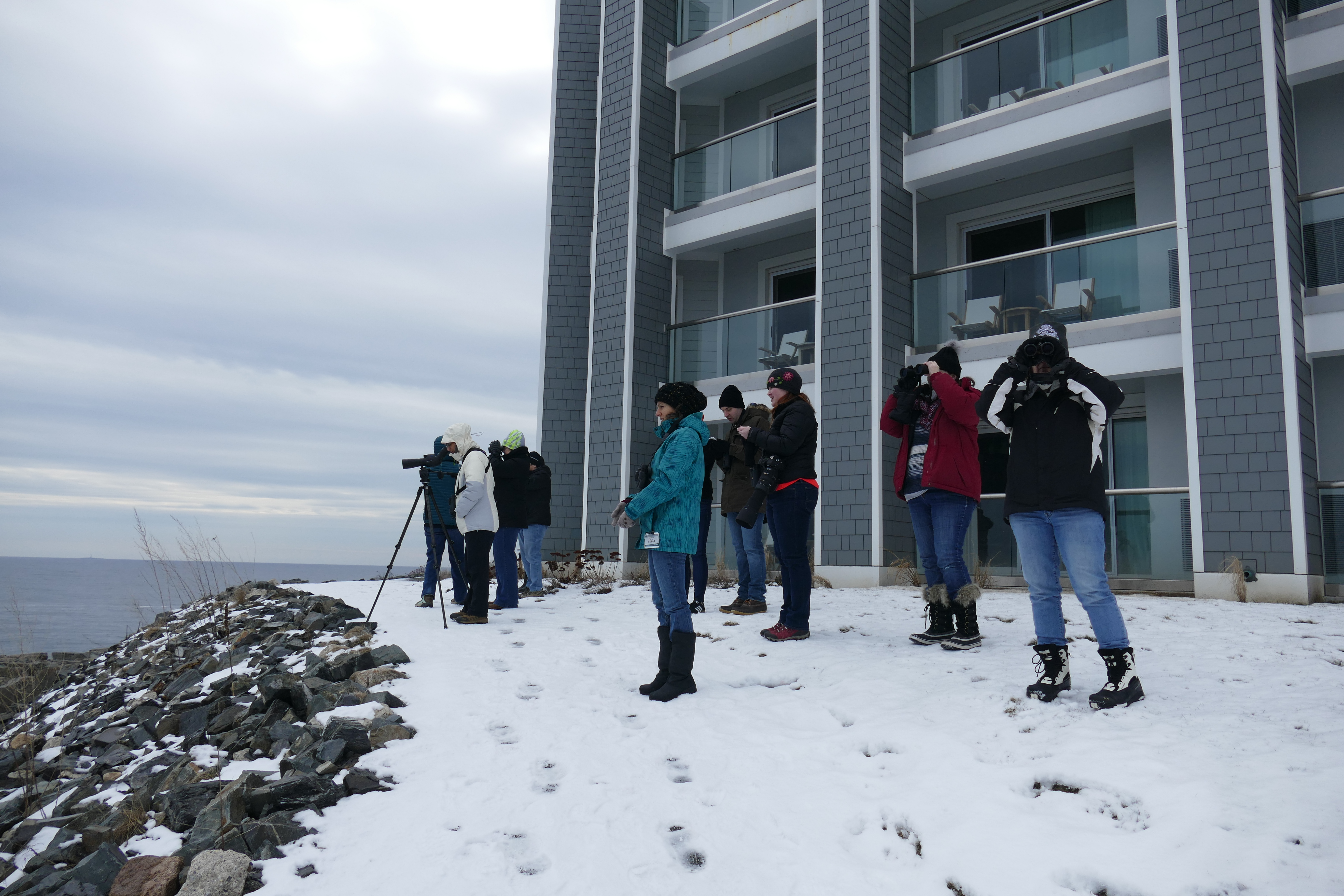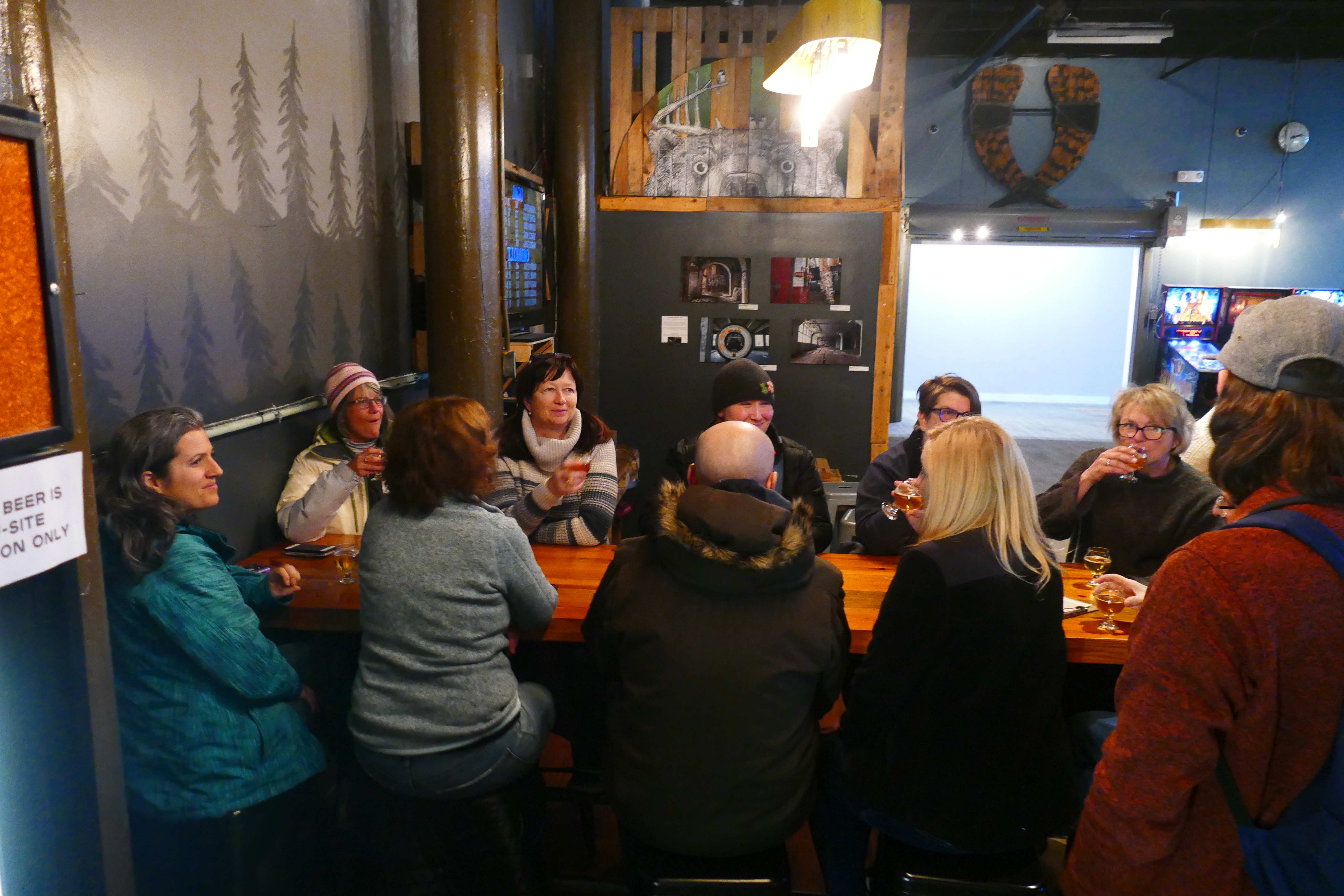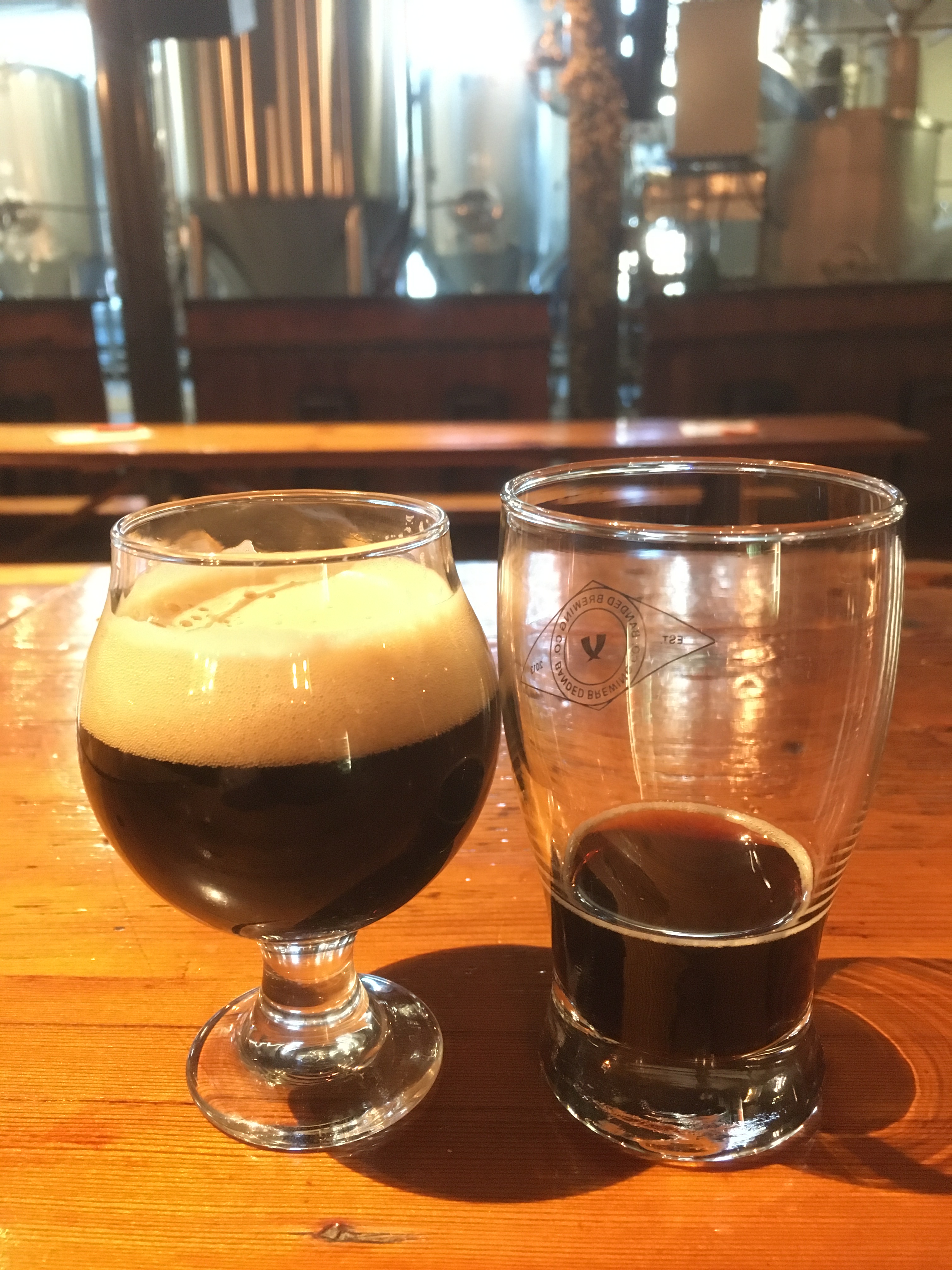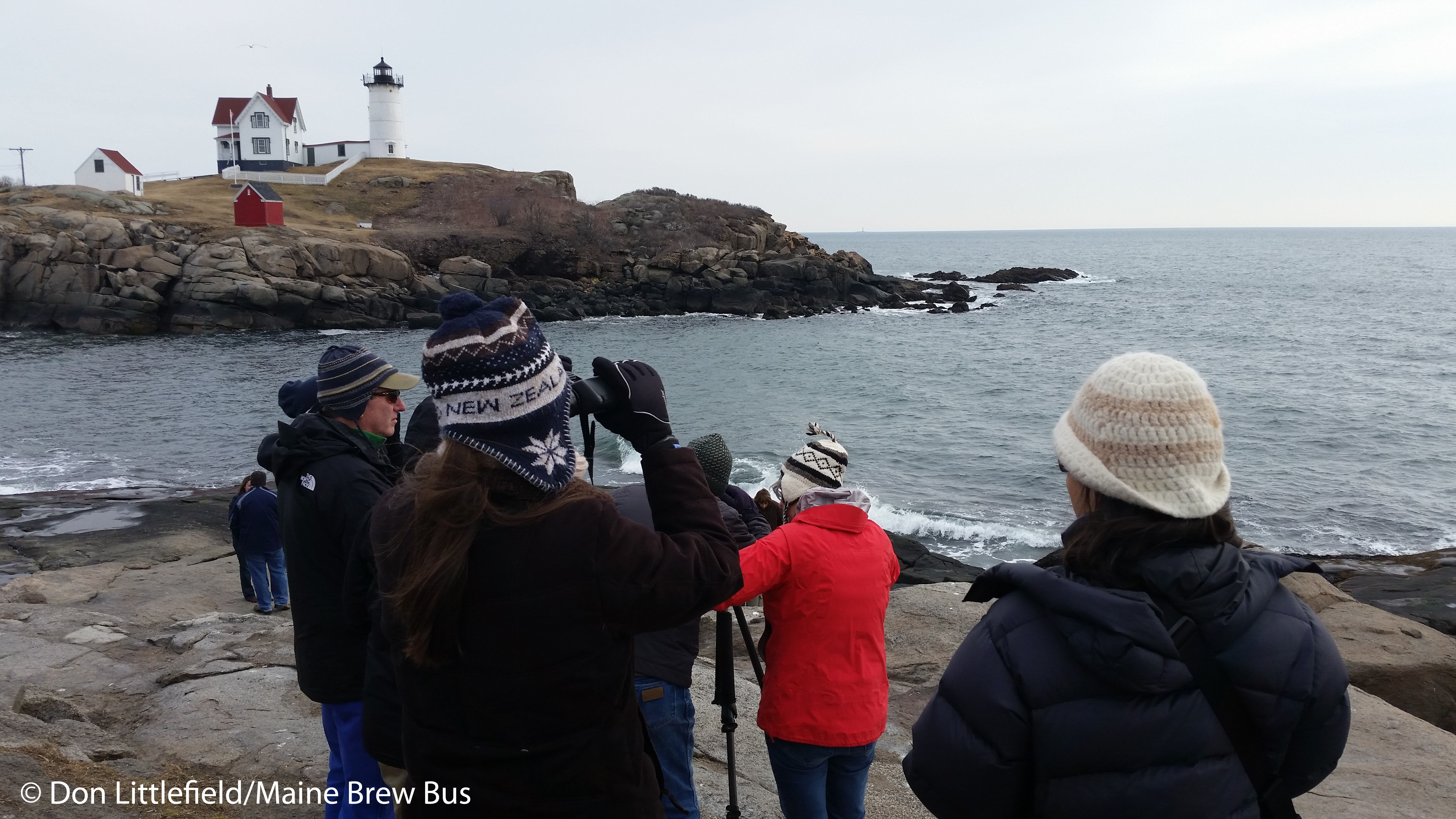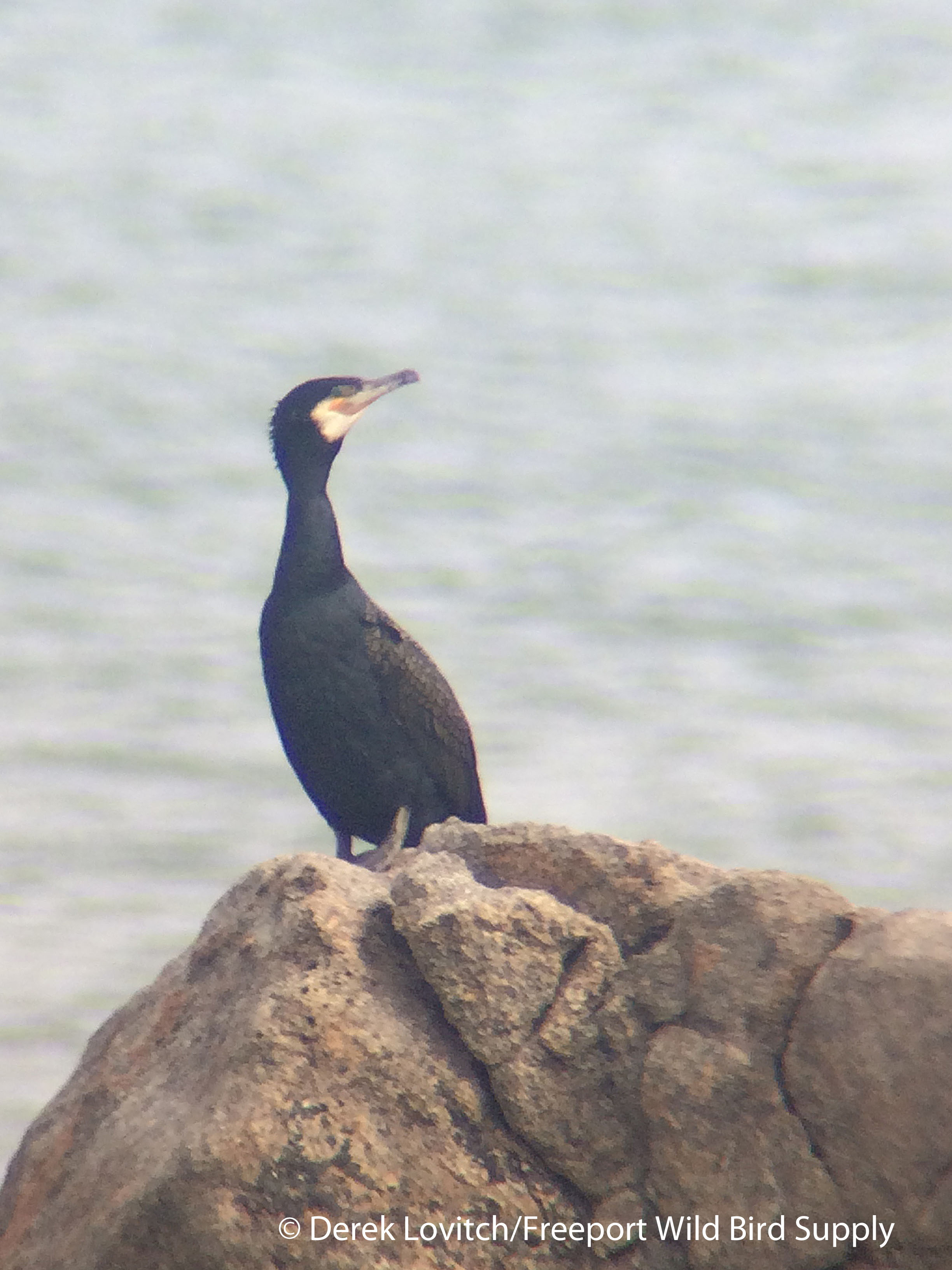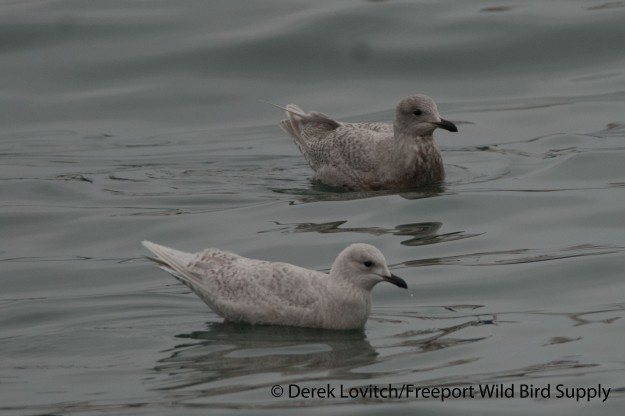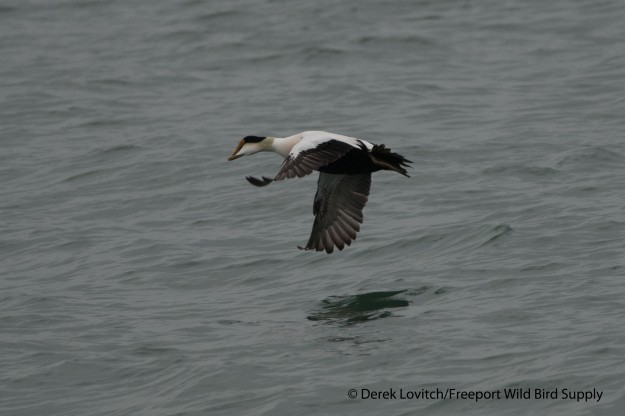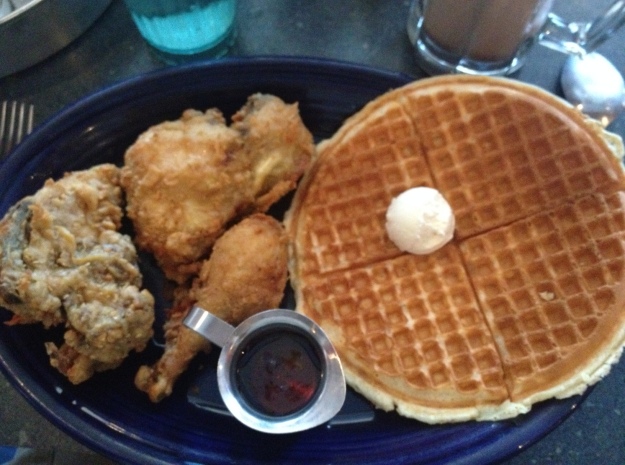
The first new “Birds on Tap – Roadtrip!” of 2018 with our partners, the Maine Brew Bus, was a resounding success. We enjoyed harlequins, hops, and so much more – including a much-hoped-for rarity. We even saw just about every single species suggested in the itinerary. And it was gorgeous out!
We had begrudgingly postponed the tour from the previous week due to the fear of ice in the morning and heavy rain and fog during the day. But the light winds, temperatures in the upper 30’s, and limited rain that the day actually featured made us wonder if we had lost the gamble. And when we woke up to 6-10” of snow (and not the 4-6 forecast!) on the morning of the 18th – and the resultant extra time clearing the driveway – I was definitely viewing the decision in hindsight.
However, the sun soon came out, the roads melted, and the temperature warmed to 40-degrees. A strengthening southerly wind was a little raw at one stop, but otherwise, it was impossible to beat the weather for a tour in February…and the fresh coating of fluffy snow only added to the aesthetically-pleasing scenery of the birding day. Furthermore, the coastal storm that spun through overnight was perfect for producing some nearshore pelagic alcids (members of the puffin family), which really got our hopes up for a life bird or two.
We began at Dyer Point in Cape Elizabeth where we soon spotted the namesake quarry of the tour: a dozen snazzy Harlequin Ducks. We were already half-way to our titled goal for the day, but of course, we were only getting started.
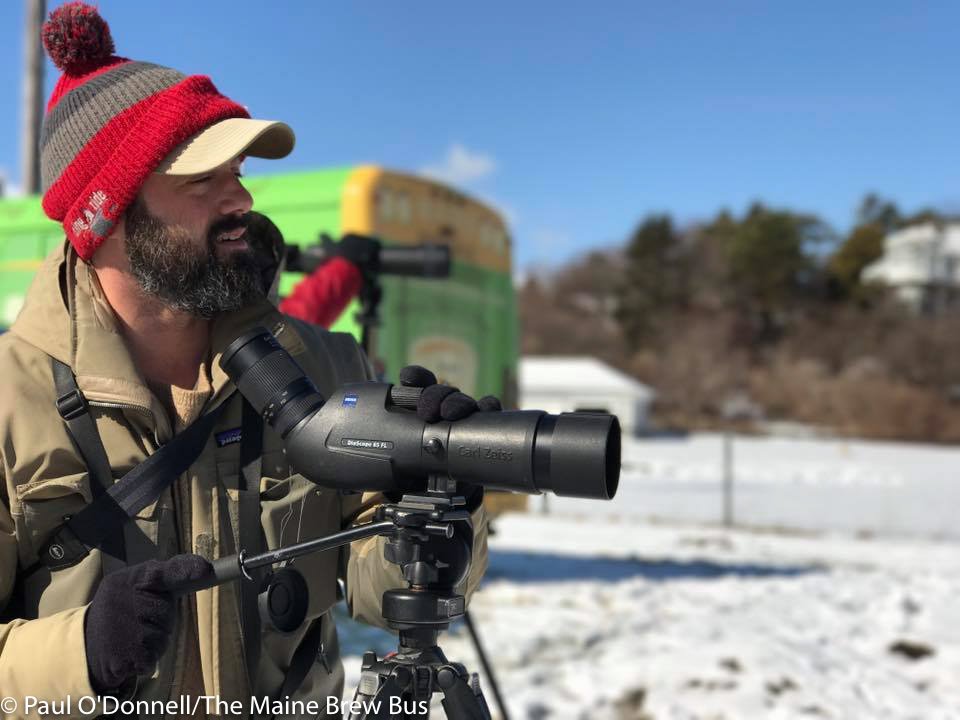
At nearby Two Lights State Park, we enjoyed several more Harlequin Ducks, lots of Common Eiders, Black and White-winged Scoters, and one Red-necked Grebe while we took in the breathtaking scenery.


And then it happened.
I spotted a Dovekie – one of the most sought-after winter specialties of the region. It was sitting on the water (had it just flown in?) with a group of eider just off the shoreline, and in perfect light. It was feeding, diving under for a minute or two at a time, but eventually, everyone got great looks through the scope, and lots of photographs were taken. Barely larger than a starling, this hardy little bird spends most of its life on the open ocean, and only comes to land to breed and nearshore in specific conditions in winter than include storm tracks, winds before and after, offshore food supplies, nearshore food supplies, and likely other unknown factors. It was a bird we only hoped for today, but a life bird for just about everyone in the group; this was a find that was soon to be celebrated!



A few Purple Sandpipers were spotted at nearby Kettle Cove as were Surf Scoters and several Common Loons, but with a southerly wind and choppy water building, I decided to make a turn inland and head for some sheltered waters. Finding that at Mill Creek Cove in South Portland, photogenic, stunning Red-breasted Mergansers stole the show, and a 1st-winter Iceland Gull was teased out of the flock.

A short, pleasant walk through Mill Creek Park yielded hundreds of Mallards (BoT veterans know how much I enjoy looking at, and talking about, large aggregations of Mallards!), and among them, the overwintering hen Wood Duck – a real rarity in winter! Although lacking the gaudy, over-the-top coloration of the drake, the subtlety-beautiful hen with her glossy bronze and green tertials and over-application of white mascara was enjoyed by all.



One last stop at the Portland fish pier, was another chance to see Iceland Gulls – actually, we saw 7 of them, including a darkly-marked adult – and offered the opportunity to get up close and personal with several of our spiffy wintering sea ducks, such as this handsome drake Long-tailed Duck.

The benefit of this winter itinerary is that there are countless birding locales to visit, with worthwhile stops given almost any weather (or travel) condition. Therefore, Paul had to rein me in – the birding was so good, I certainly wanted to keep going! – and with that, we departed, and I handed the proverbial microphone over to our esteemed beer guide for the day.
Paul took the lead and escorted us to eighteen twenty wines in Portland, our only winery visit on the 2018 BoT schedule. Making wine from Maine-grown rhubarb, and hard cider in small batches from Maine-grown apples, this was going to be a unique and educational experience. Maine became a state in 1820, and it was also the first year were rhubarb was found in the public market, we soon learned. A very traditional beverage, rhubarb wine was popular – especially for medicinal purposes – in the early 1800’s.


We were treated to two wines, and two ciders. The first wine was Wintrus, a rhubarb wine aged in cabernet barrels, which imparted notes of the cabernet and oak-y woodiness, adding a little complexity to this rather light wine that was perfectly positioned between dry and sweet. The strawberry-rhubarb Honeoye was next, with plenty of strawberry flavor, but only a little sweeter and nowhere near the expectations of an overly-sugared strawberry-rhubarb pie which is its inspiration.
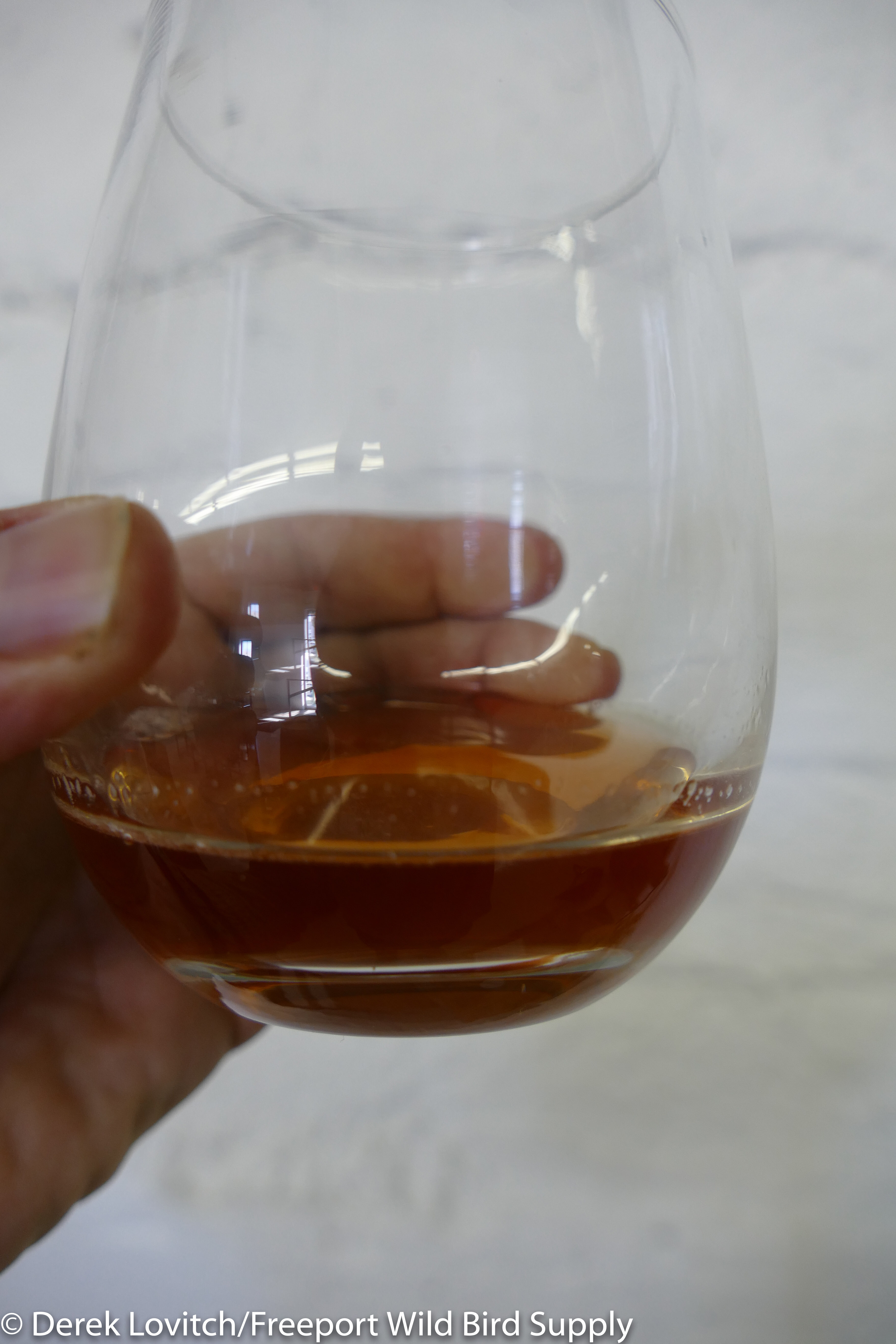
Ohm was our first cider, an “English Eastern Counties-style:” dry, light, and uncarbonated. This was soon followed by what turned out to be the crowd favorite, Ohm’s Law, the Ohm aged in cinnamon whiskey barrel. Reminiscent of an apple pie, but again, without the overt sweetness, and likely due to the lack of carbonation, finishing with a soft and smooth buttery flavor.
We also learned about the trials and tribulations of opening a new winery – especially given the legal definitions and the lack of grape vines in this “urban winery,” as well as future plans that include experimentation with the 60+ varieties of rhubarb.

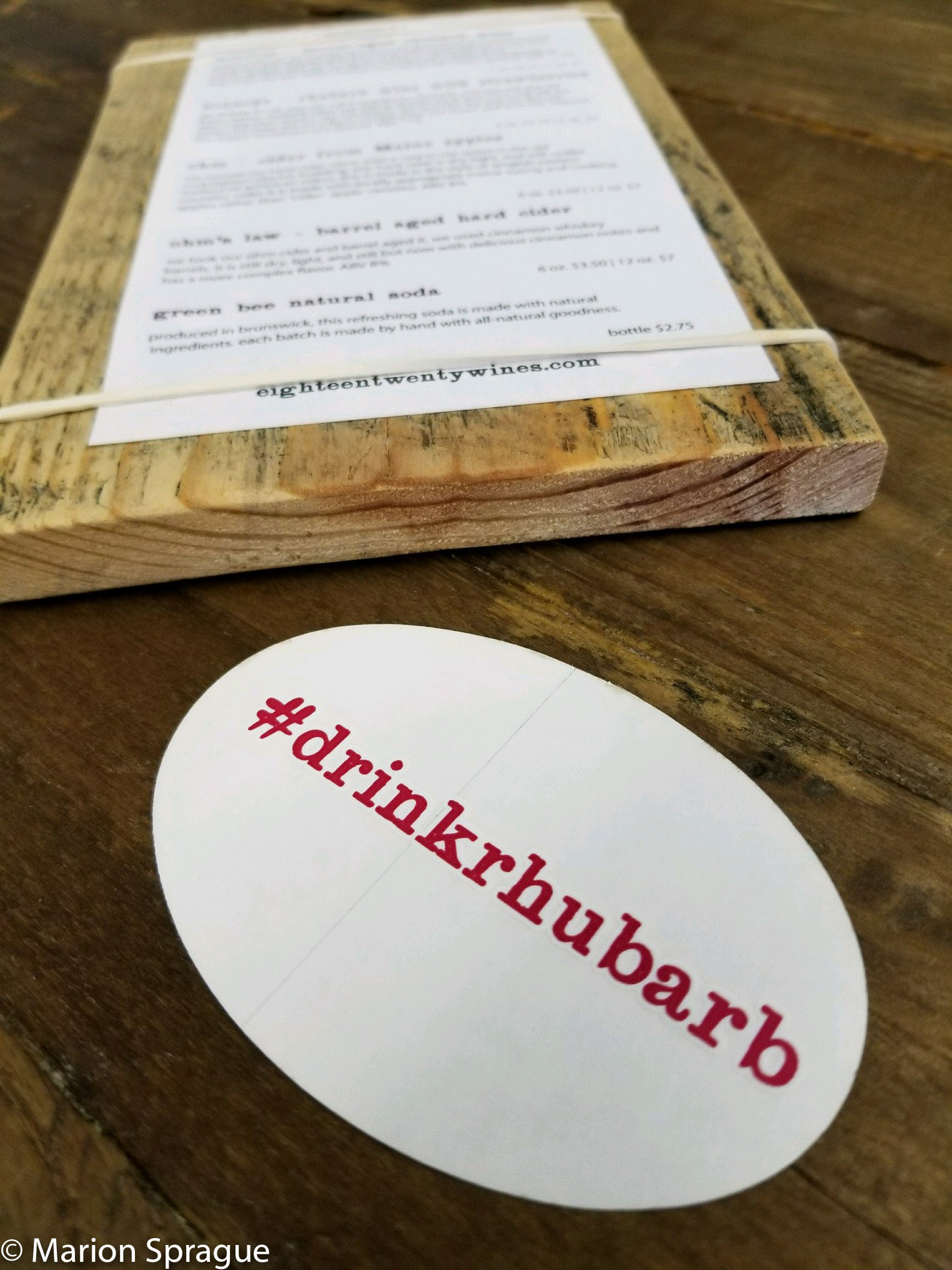
The long commute to the other side of the building (this itinerary was designed to reduce driving, just in case the roads were normal-February snotty) presented us with the second half of the tour’s title: the hops. And hops were abundant and well spoken for in the brews of Goodfire Brewing Co, the newest brewery in the burgeoning “Yeast Bayside” scene.

We were handed samples of one of their IPAs, Prime, which I’ll admit my bias – it has rapidly become one of my favorite beers. A citrusy juice-bomb, I was keen to have the group compare it to our second selection, Waves. Also a hazy, New England-style IPA, this beer features complex tropical fruit notes instead.
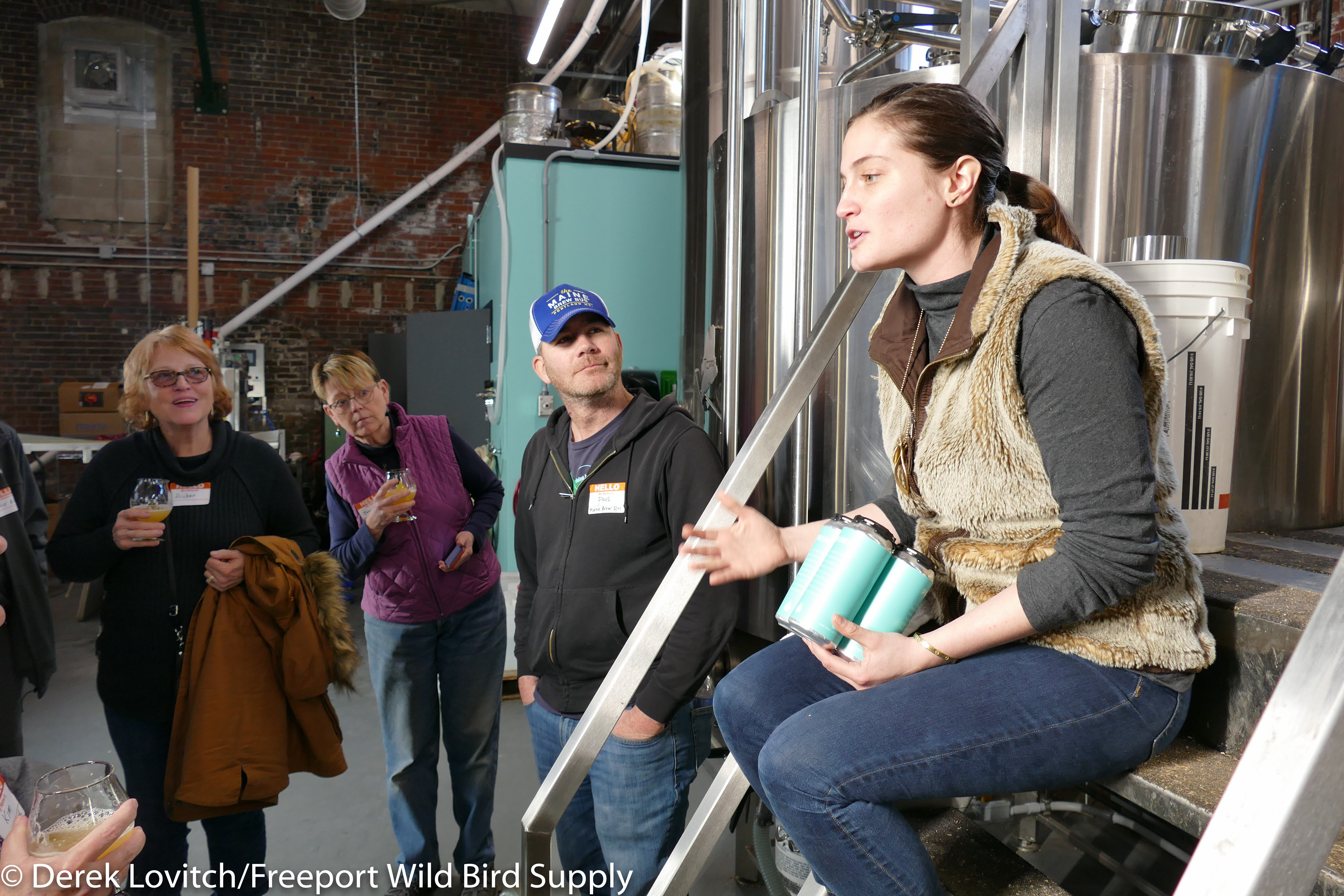
Earlier, Paul had inquired about what beers and other beverages people did and did not like, and quite a few people on the bus proclaimed themselves as “not IPA fans.” New England IPAs are not your bitter IPAs of old, and so I wanted to challenge people’s ideas of what an IPA is, and hopefully open some minds. I was therefore rather pleased when one of those self-proclaimed non-IPA fans proclaimed Prime as their favorite beverage of the day on the ride back home. Mission accomplished!


The final sample was a choice between the hoppy “table beer” saison, Tiny Wrist Circles, and the hot-off-the-presses Hydro, their latest Double IPA. I’ll give you one guess to what I had, and then went home with!
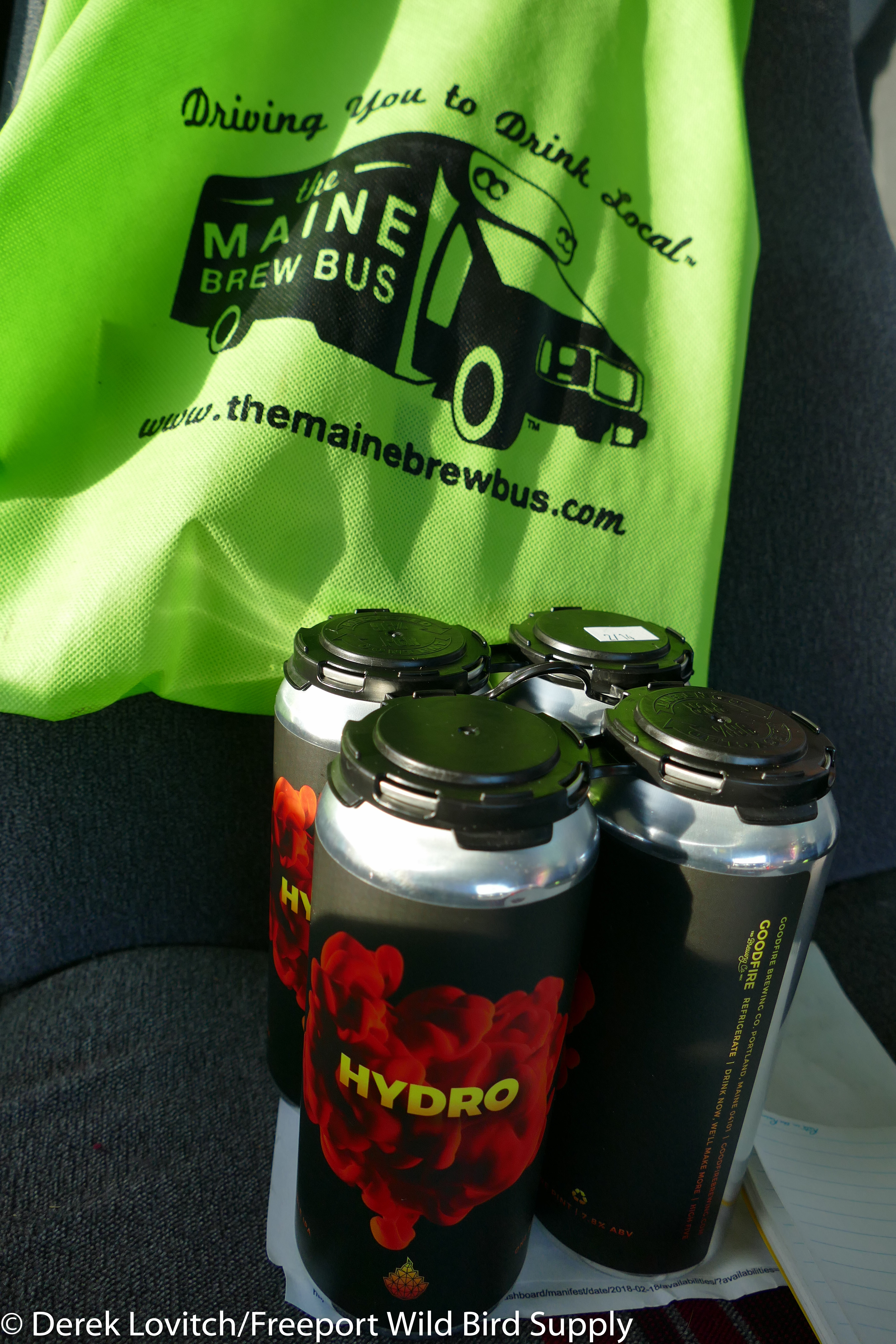
It was a quick and easy commute to our Portland meeting location, followed by a smooth and clear drive to Freeport for the rest of us. Conversation included Dovekie ecology, IPA diversity, and what an amazingly beautiful winter’s day we had just experienced. Something tells me Harlequins and Hops will be back!




